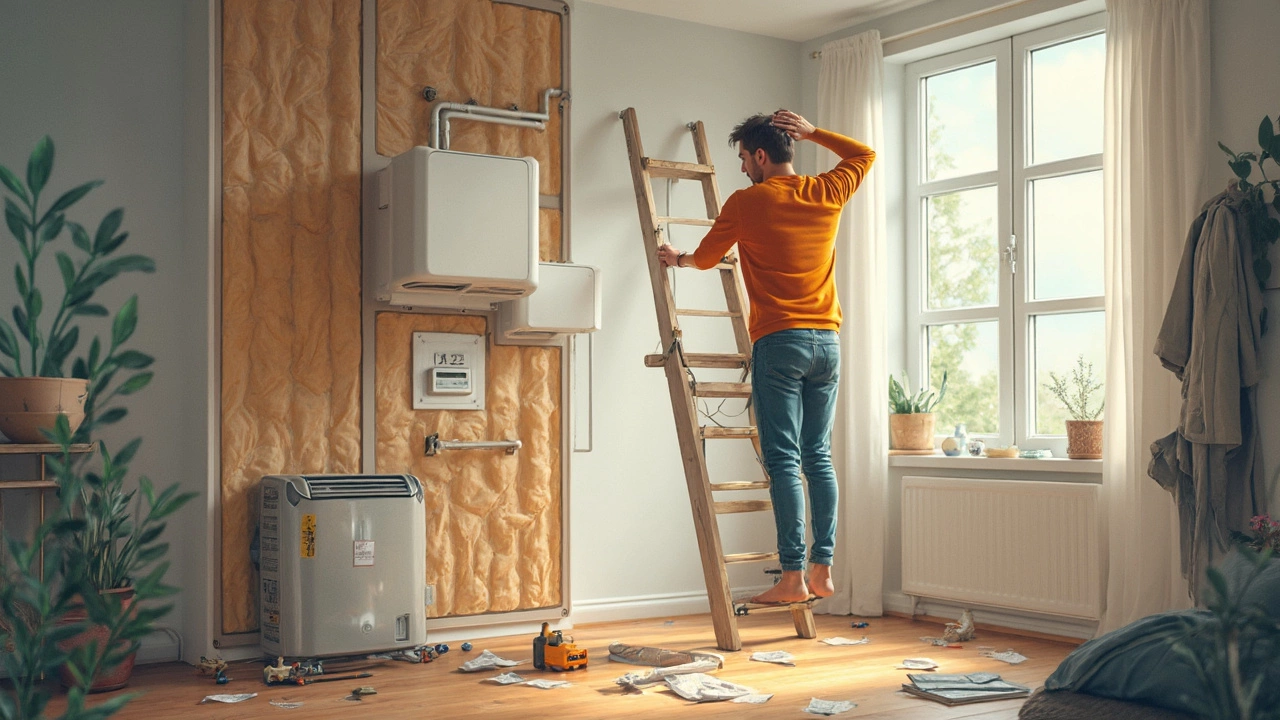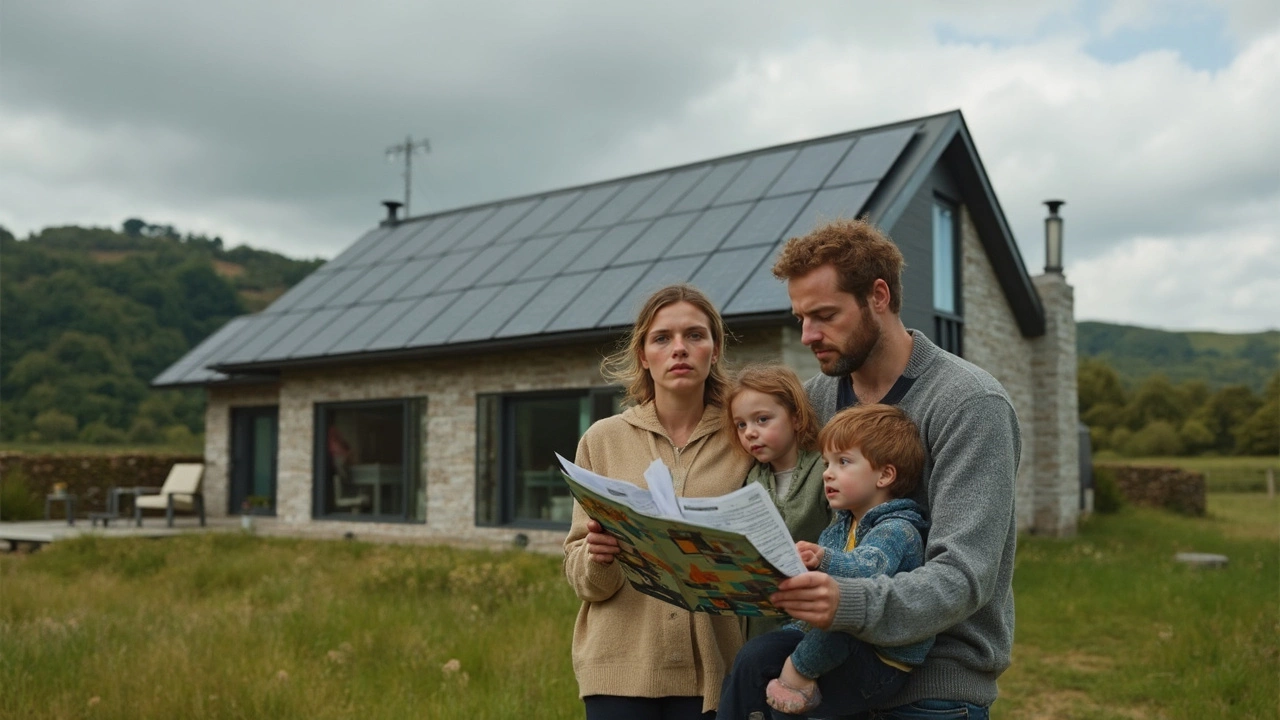Eco homes sound like a dream, right? Who wouldn’t want to shrink their carbon footprint, slash utility bills, and maybe even boast about a house powered by sunshine and rainwater? Here’s the catch—every rose has its thorn, and green buildings come with some sneaky disadvantages that rarely appear in glossy brochures or TikTok home tours. Eco homes can certainly pay off, but they aren’t a breeze. There’s a messy side to green living that’s worth knowing about if you’ve ever been tempted by those sun-drenched renderings and promises of natural bliss. For anyone considering going eco, you’ll want to read about these real-life drawbacks before you sign up for the adventure.
The True Price Tag: Hidden and Upfront Costs of Eco Homes
People love bragging about how much an eco home can save on energy bills, but let’s get real about the sticker shock first. Eco-friendly homes come with higher upfront costs compared to standard houses—sometimes up to 20% more, depending on how fancy you get with solar panels, triple-pane windows, recycled insulation, or fancy rainwater systems. The cost of advanced HVAC systems, geothermal pumps, and high-tech energy monitoring can balloon, and that’s before you even move in. According to a 2024 report by the US Green Building Council, construction of a new sustainable home can cost an extra $30,000 to $70,000 for even an average-sized place.
Why does it cost so much? Eco materials are often imported or require specialized labor. Insulation made from sheep’s wool, hempcrete, or recycled denim isn’t typically sold at your corner hardware store. Eco-certified wood (like FSC-certified timber) is great for forests, but it’s much pricier and often harder to get. Then you get hit with added fees for permits and inspections that some municipalities require for green features. Custom designs and plans are almost a must, which means hiring experienced architects and engineers—a bigger chunk to the budget.
But here's a kicker: Some eco features don’t save as much as you’d hope. Those solar panels might trim your bills, but the payback time can be 8 to 15 years, depending on your sun exposure, local energy rates, and maintenance. Add battery storage, and you’re paying even more for that peace of mind during a blackout. Plus, government incentives, like rebates or tax credits, can disappear with the next election. One homeowner I spoke to had their planned solar tax credit slashed in half by a change in state policy, adding $6,000 more out of pocket. If budgets are tight or you’re hoping to recoup your investment quickly, it’s smart to pull out a calculator.
eco homes also tend to have higher insurance premiums—especially if you build with unconventional materials or embed unusual features like green roofs, because fewer insurers are familiar with the risks. Many banks still hesitate to give favorable mortgage rates for eco builds, seeing them as riskier than traditional homes. If you’re trying to sell, not every buyer is thrilled about learning how to operate specialized energy systems or maintain eco features. All these real-life expenses add up.
Here’s a quick comparison to put it in numbers:
| Feature | Traditional Home | Eco Home |
|---|---|---|
| Basic Build Cost per Sq Ft | $180 | $210 |
| Common Insulation Material | Fiberglass ($0.65/sq ft) | Cellulose ($1.20/sq ft) |
| Solar Installation (5kW) | N/A | $12,000-$16,000 |
| Triple Glazed Windows | N/A | $900/window |
| Permits/Inspections (Eco Features) | $2,500 | $3,800 |
Want to save money? Sometimes, it’s wiser to retrofit your current home with a few key upgrades rather than build from scratch. Think smart thermostats or new insulation before a huge remodel.
Maintenance Headaches and Unexpected Repairs
Eco homes promise a lot, but no one really talks about the maintenance routines until you’re reading that 40-page manual. Advanced tech always seems like a great idea until it needs repairs. Green roofs, living walls, and fancy HVAC systems can sometimes mean more stress than comfort. Sure, you get better air and lower energy bills, but these systems need regular checkups—missing a filter change or slacking on roof garden care can turn your paradise into a soggy headache. HVAC with heat recovery or radiant heat systems, for example, often need specialists for tune-ups. A typical technician may not know what to do with a geothermal system, and that can make repairs pricier and take weeks longer.
Let’s bust another eco myth: Not all green homes age gracefully. Features like low-flow toilets and composting systems can clog or malfunction if not used perfectly. Off-grid water systems might freeze or leak, especially in cold climates. Solar panels rarely “break,” but they degrade and lose power over time, usually 0.5-1% a year—and cleaning them safely when installed on a steep roof isn’t exactly fun. Composting toilets ask for ongoing attention, and if you slack, you’ll regret it fast.
Some materials also aren’t as bulletproof as you’d hope. Straw-bale walls can rot if poorly sealed. Rammed earth absorbs water if not built right, causing extra wear over the years. Timber cladding can attract bugs unless well treated. Smart home eco controls? They’re fantastic, until your app glitches and refuses to talk to your HVAC. Plus, with new tech, replacement parts can be hard to source—especially if your builder used lesser-known brands or systems from overseas. I’ve heard stories of homeowners waiting four months on a custom inverter for their European-made solar system, meanwhile watching energy bills skyrocket back to grid rates.
So what helps? If you pick eco features, stick with tried-and-true systems from bigger brands with local support. Ask your builder for clear maintenance routines up front, and budget for yearly inspections. Don’t count on “set it and forget it”—eco homes need care to stay green. This maintenance isn’t always cheap either; budget at least 1-2% of your home’s value annually, just for upkeep. Keeping a detailed log of service dates, filter changes, and professional checkups will pay for itself in the long run.

Lifestyle Adjustments and Comfort Trade-offs
Here’s something architects rarely mention: Living in an eco home can mean changing your routines—sometimes in frustrating ways. Most eco-friendly homes are built tight for energy efficiency, but that means airflow has to be carefully managed. You might need to get used to mechanical ventilation, which can sound strange at night or require regular filter swaps. Open floor plans and huge glass walls look great, but passive heating strategies often mean smaller, well-zoned spaces with less of that wide-open modern vibe you see in lifestyle mags.
And let’s talk about temperature. Relying on passive solar heating can leave you chilly if the design isn’t perfect. Overhangs that block summer sun can also shade your house too much in winter. Some well-insulated homes overheat with too much direct sun, or never quite shake the winter chill. If you want big windows, you’ll often pay with either drafts or overheating—or invest in ultra-high-end glass to balance it out. Some people find that eco homes with very thick walls feel “stuffy” or closed in, compared to old, draughty houses. Sound familiar?
Then come compromises in appliances and lifestyle. Lower-flow appliances save water, but sometimes at the expense of convenience. If your eco home relies on a solar array and battery, you’ll become very aware of cloudy days and power use, maybe changing when you run the washer or oven. Living off grid? Hope you love managing backup generators and dealing with batteries. Even indoor air quality systems can mean more filters and adjustments. Living in a green home means being willing to learn—and stay on top of—dozens of little quirks, from compost toilets to graywater systems.
Tips for staying comfortable? When planning, think about your lifestyle and be brutally honest with your architect. Bring up habits, hobbies, and comfort zones. Ask about extreme weather—every home looks good on a sunny day. See if you can visit eco homes in your region, and chat with folks about what daily life is really like. Their stories will probably surprise you, and maybe save you some future frustration.
Regulations, Resale Hurdles, and Community Acceptance
You’ve made it past the building and now you’re living green. Is that the end of the story? Nope—not unless you plan to stay forever. Local rules and the neighbors sometimes turn into real headaches. Many cities love to talk up sustainability, but when you try to get permits for water tanks, wind turbines, composting toilets, or earth-based construction, you’ll find a lot of planning offices are stuck in the past. Some have no clear process for eco features, leading to endless red tape.
HOAs—homeowners associations—can be even worse. Want to install a rooftop solar array? Good luck getting it approved in a neighborhood that loves uniformity. Fancy a green roof? Sorry, not on their watch. Some neighbors see eco homes as “ugly” or out of place, especially with unusual exteriors or unkempt-looking native gardens. All this can mean arguing with boards, wrangling with inspectors, or spending on extra consulting just to get through the rules.
Thinking about moving later? You’ll need a buyer who shares your green values, or is at least willing to learn the systems. Some folks love the challenge—others are scared off by compost toilets, graywater reuse, or having to “babysit” the solar controller. Banks and lenders also tend to be conservative, and it’s not always easy getting top-dollar valuation for features that appraisers and buyers don’t fully understand. In 2024, eco-friendly homes tended to sell 10-20% slower on the mainstream market, according to Redfin data. While that gap’s closing, it’s still a reality in many regions.
How to dodge these headaches? Before you build, check all local permits and codes—ask specifically about rainwater collection, solar, composting toilets, and even roof color (yes, some towns restrict those, too). Build relationships with inspectors, and look for eco home forums online to get tips from others who’ve faced the same drama. Consider resale as you design—think about which features truly save money or make life easier and which might feel like chores to someone else. And if your neighborhood’s traditional, maybe start smaller with upgrades instead of a totally different look, to keep the peace and the property value up.
Eco homes are full of promise, but you’ve got to go in with your eyes open. With the right prep and a realistic view, they can give incredible comfort, health, and bragging rights. Just know the drawbacks can sneak up on you—so plan, budget, and talk to people who’ve done it before. That’s how you turn a green dream into a real-life, day-to-day win.
